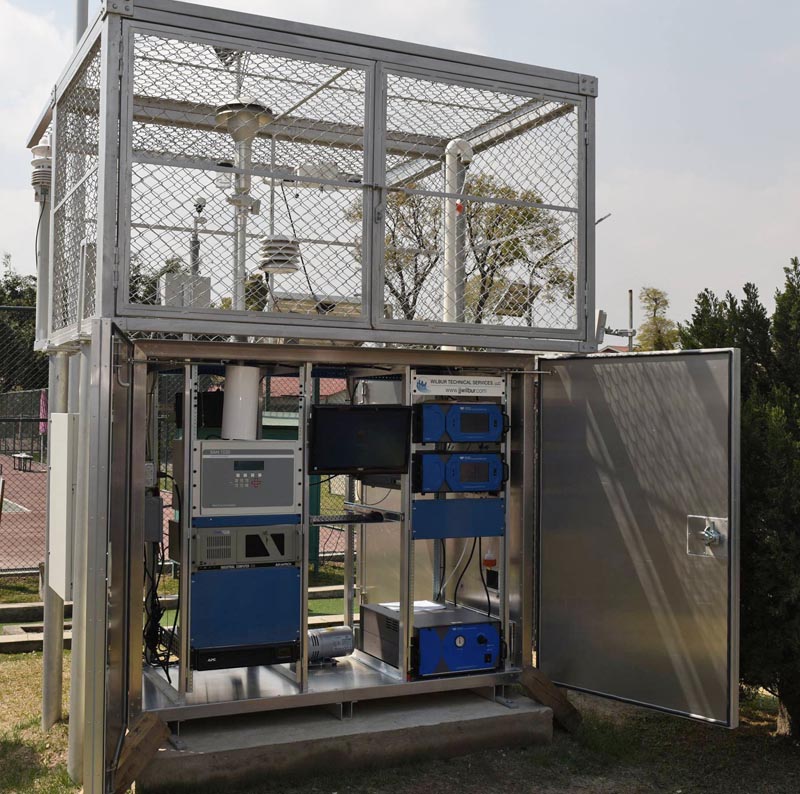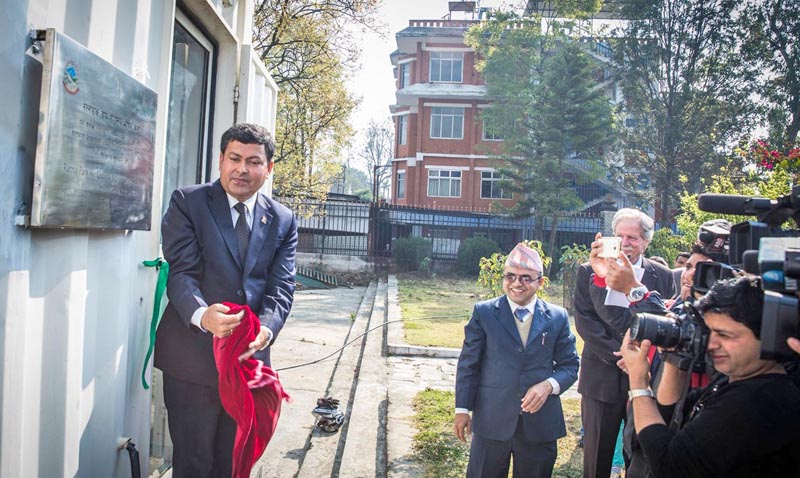Air quality monitoring station in Ratnapark officially launched

Kathmandu, March 14
The government today officially launched the air quality monitoring station that was set up in Ratnapark six months ago.
Secretary at the Ministry of Population and Environment Bishwonath Oli inaugurated the station amidst a formal programme and also launched the government’s official pollution data portal www.pollution.gov.np.
Speaking at the programme, Secretary Oli said air pollution was becoming a major problem in the world.
He said the air quality monitoring station would help collect data on the city’s air quality.
The station was installed in Ratnapark six months ago by the Department of Environment with technical support from International Centre for Integrated Mountain Development.
Director General of ICIMOD David James Molden said ICIMOD had established air quality stations in Nepal in collaboration with the Government of Nepal.
The department said along with the station in Ratnapark, two other stations in Pulchowk and Dhulikhel were in preliminary operation as of now, and an official inauguration programme would be organised soon.
The government had resumed air quality monitoring in Kathmandu Valley by installing a station at Ratnapark, seven years after previous monitoring stations were closed.
The station, which came into operation on August 9, continuously measures particulate matter concentration in the air.
According to the Department of Environment, the station has been sending data regularly to the central sever since it began operation. The station measured dust particles, especially particulate matter (PM 10) and PM 2.5, levels of carbon monoxide, sulfur dioxide, nitrogen oxide, and ozone in the atmosphere.
Although the practice of monitoring levels of air pollution began in Nepal in 2002 with the installation of seven air quality stations in the Valley by the Danish government, all stations were shut down by 2009.
After the stations were handed over to the Nepali government in 2008, the government entrusted the Environment and Public Health Organisation with operation of the stations.
A misunderstanding between the government and the Environment and Public Health Organisation led to closure of the stations in 2009.
The department is in the process of installing 56 stations throughout the country.






